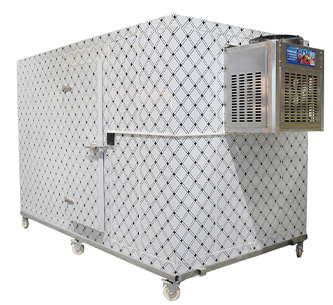Innovative Cold Room Sandwich Panels for Efficient Temperature Control in China
The Role of Cold Room Sandwich Panels in China’s Cold Chain Logistics
In recent years, the demand for efficient cold chain logistics in China has surged due to the growth of e-commerce, food safety regulations, and the need for better preservation of perishable goods. A critical component in enhancing cold storage solutions is the use of cold room sandwich panels. These panels offer an effective insulation solution, ensuring that temperature-sensitive products are stored in optimal conditions.
Understanding Cold Room Sandwich Panels
Cold room sandwich panels are composite panels made up of two outer layers and an insulating core. The outer layers are typically made from materials such as galvanized steel, aluminum, or fiberglass, while the core is often made from polyurethane, polystyrene, or other insulating materials. This construction lends itself to superior thermal efficiency, crucial for maintaining low temperatures in cold storage facilities.
The “sandwich” structure of these panels provides multiple benefits. Firstly, the insulating core significantly reduces heat transfer, minimizing energy costs associated with refrigeration. As energy prices continue to rise, this efficiency is particularly valuable. Secondly, the lightweight nature of sandwich panels makes them easier to handle and install compared to traditional construction materials, thereby reducing labor and installation time.
Applications in Cold Chain Logistics
In China, cold room sandwich panels are extensively used in various sectors, most notably in food storage, pharmaceuticals, and logistics. With the increasing demand for fresh food products, such as fruits, vegetables, and seafood, the food industry is turning to cold storage solutions to maintain product quality and safety. Cold room sandwich panels facilitate the creation of refrigerated warehouses and distribution centers, ensuring that goods are kept at consistent temperatures throughout the supply chain.
Additionally, the pharmaceutical sector relies heavily on controlled-temperature storage. Vaccines, medications, and other medical supplies often require strict temperature regulations to maintain efficacy. Cold room sandwich panels provide a reliable barrier against external temperatures, ensuring that these critical products are preserved within the required range.
china cold room sandwich panel

Advantages of Using Cold Room Sandwich Panels
1. Energy Efficiency The superior insulating properties of sandwich panels help to reduce energy usage by maintaining consistent internal temperatures. This not only lowers operational costs but also contributes to environmental sustainability.
2. Durability and Maintenance Sandwich panels are designed to withstand harsh environmental conditions. They are resistant to moisture, corrosion, and pests, making them a long-lasting solution for cold storage. Additionally, their easy-clean surfaces help maintain hygiene standards in food and pharmaceutical applications.
3. Customization and Flexibility Cold room sandwich panels can be customized to fit various sizes and configurations, allowing for flexible designs that suit individual business needs. Whether constructing a small cold room or a large commercial warehouse, these panels offer scalable solutions.
4. Quick Installation The modular nature of sandwich panels allows for rapid installation. This speed can be crucial in industries where time is limited or where businesses need to scale operations quickly to meet demand.
Conclusion
As China continues to expand its cold chain logistics infrastructure, the importance of efficient and effective materials like cold room sandwich panels cannot be overstated. These panels not only enhance energy efficiency and reduce operational costs but also play a crucial role in maintaining the quality and safety of temperature-sensitive goods.
Whether in the food industry or pharmaceuticals, the integration of cold room sandwich panels into logistics operations represents a modern solution to meet the evolving demands of consumers and regulatory bodies alike. As the trend towards e-commerce and the need for high-quality perishable goods continue to grow, the adoption of such innovative materials will be essential for ensuring that China’s cold chain logistics can keep pace with future challenges.
















































































































